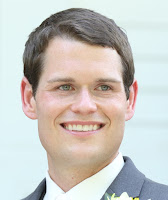 |
| The bear is a symbol of Berlin. |
Berlin Seminar
Brandenburg Gate, Berlin - Spherical Image - RICOH THETAUse your mouse to move the image and see Berlin's Brandenburg Gate.
Berlin Wall
For one day of the forum, participants embarked on a guided tour in or around Berlin. There were 22 tours to choose from. It was extremely difficult to select just one. I finally agreed on Tour 5: Borderwalks – Borderless: Walking Where the Wall Once Stood. Our guide was living in West Berlin during the Cold War. He was in the city in 1989 when the East finally opened the wall. It is a fascinating piece of history and difficult to fathom that it happened not that long ago. We walked the former “deathstrip” between Checkpoint Charlie and Postdamer Platz. The guide told us stories of how Berlin was violently split in 1961 and how one lived in the divided city. So many people have their own stories and thoughts about the wall. Today, there are memorials and exhibits all around the city to keep us from never forgetting what happened.
Teufelsberg, Germany - Spherical Image - RICOH THETA360-degree image of Teufelsberg, the site of an abandoned U.S. listening station during the Cold War that is now a place and inspiration for graffiti.
 |
| Holocaust Memorial |
School Visits
After discovering so much of Berlin’s history in the 20th century, it was a time for a change in pace. Time to visit some German schools! I was able to schedule visits to two public schools in Berlin. This was a wonderful opportunity to compare German schools from what I have seen in Finland. Plus, every school visit helps me to reflect on my own teaching practice and discover ways to improve.
My first visit was to John F. Kennedy School, a public primary and secondary school. It was established in 1960 under the name "German-American Community School" as a school offering integrated, bilingual education for both German and American children, to foster cultural exchange between young natives of West Berlin and children from U.S. Armed Forces families. Today, it is a highly sought-after school. Students apply to attend this public school but space is limited. The majority of the more than 1700 students are German and American with about 10% from a wide variety of other countries.
I had an excellent visit at JFK School due to the itinerary prepared by one of the vice principals. She created a detailed schedule that allowed me to visit several classes from across grade levels and subject areas. My notes are lengthy and my mind is still spinning with thoughts and ideas from my observations.
Here are some major points from my visit at JFK School:
- Class periods are 45 minutes
- Lunch is 45 minutes
- Recess is 45 minutes
- Teachers can leave after their last class
- Most teachers do not have extra “duties” like bus or car rider duty
- Students are tested by the state in ELA and Math in 3rd and 8th grades
- Students take other mandatory exams in 10th and 12th grades
- Most teachers spend 21 hours a week delivering instruction
- Some students learn math in a languages that is not their native tongue: German or English
- Students have a “Mother Tongue” class where they learn reading and writing in English or German
- In 5th grade, students get an elective class (i.e. Art, Sports, Legos)
- There is no Kindergarten in Germany but some schools have an “entry class” before the first grade
Excursions
The City of Potsdam
On my final weekend in Berlin, I took two excursions outside the city. My first excursion was to the city of Potsdam which was once home to Prussian kings and the German Kaiser. We saw how royalty left its mark on the city's streets as we wandered past Cecilienhof Palace, King Frederick William II’s Marble Palace, the Dutch quarter, and the UNESCO-listed Sanssouci Palace and Gardens. We also went to the courtyard of a palace that was the location of the Potsdam Conference which decided Germany’s fate after WWII.
Potsdam, Germany - Spherical Image - RICOH THETA360-degree image of a popular street near Potsdam's Dutch quarter.
Sachsenhausen Concentration Camp
Just outside of Berlin is Sachsenhausen, one of the first concentration camps established by Nazi Germany’s Third Reich. Today, the site serves as a national memorial to the prisoners who lived and died here. More than 200,000 people were imprisoned in Sachsenhausen between 1936 and 1945. We visited various locations inside the camp, like the command headquarters and execution trench, and learned about Germany during the rule of the Third Reich. In April of 1945. At that time, approximately 3,000 sick prisoners, along with the doctors and nurses who had stayed behind in the camp, were freed by Soviet and Polish soldiers. It is important to learn about the past and not make similar mistakes. I know I will never, could never, forget my visit to Sachsenhausen.
All Good Things Must Come to an End
I could go on and on about the 10 days I spent in Berlin. It was a challenge to keep this blog post under 1,500 words which is more than I usually write. I will end not with more words, but with more pictures! After all, a picture is worth a thousand words.
 |
| Reichstag Building (Germany's Parliament) |
 |
| Schnitzel (top left) and Currywurst (top right) are Berlin staples. |

















